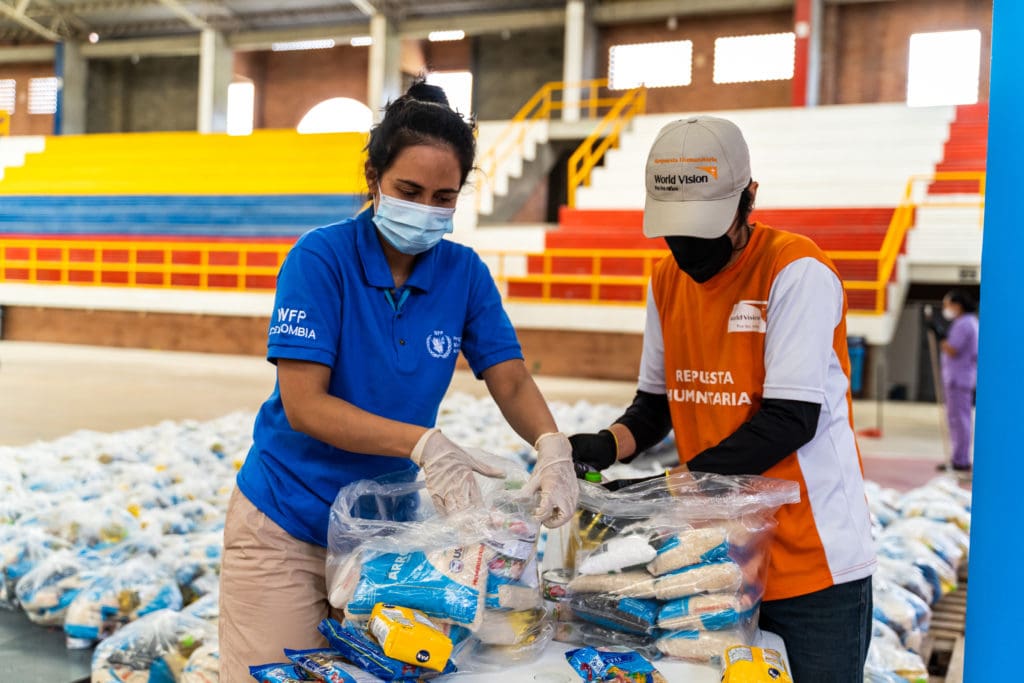COVID-19: Millions at Risk of Severe Food Insecurity in Latin America and Caribbean

PANAMA CITY – The socio-economic impact of the COVID-19 pandemic in Latin America and the Caribbean could potentially leave around 14 million* vulnerable people in severe food insecurity this year, warranting urgent attention to save lives, according to projections by the United Nations World Food Programme (WFP).
“It is vital and urgent that we provide food assistance to the growing number of vulnerable people in the region, as well as those who depend on informal work,” said Miguel Barreto, WFP Regional Director for Latin America and the Caribbean. “We still have time to prevent the COVID-19 pandemic from becoming a hunger pandemic.”
The estimate suggests that an additional 10 million people could be pushed into poverty and hunger in 11 countries in the region, including the small island developing states in the Caribbean. In 2019, 3.4 million people were facing severe food insecurity, meaning they were in an emergency-like situation and were unable to meet their basic food needs both in quantity and diversity.
The WFP projection is based on the comparison between food security assessments carried out in 2019, an analysis of economic indicators after the COVID-19 outbreak, and the results of remote surveys completed in 2020 to assess the impact of the pandemic on markets access, food security and livelihoods.
The analysis of economic indicators for 2020 is not encouraging. With the pandemic, the Economic Commission for Latin America and the Caribbean (ECLAC) forecasts an average regional contraction of -5.3 percent for this year. The impact of this contraction in economic activity can aggravate the already precarious condition of millions of vulnerable people who need to work to have access to food. Movement restrictions and shelter-in-place orders make it difficult or impossible to do so currently. ECLAC and the International Labour Organization (ILO) estimates on job losses by the poor working class and the loss of income from remittances from abroad were also negative.
WFP urges countries to provide additional support to beneficiaries of national social protection programs and to expand its coverage to more groups, such as migrants and people without formal employment. In order to respond quickly and at scale to the enormous challenge presented by COVID-19, some countries need assistance from international financial institutions and the international community.
“Working together, we can minimize the risk of food insecurity and protect the most vulnerable countries and communities from the potentially devastating effects of the pandemic,” said Barreto.
In order to raise awareness of what COVID-hit communities are facing, WFP is today launching the #MissingThisMeal campaign, an opportunity for individuals to show solidarity with the people most vulnerable to the effects of the pandemic. The campaign launches on World Hunger Day.
Key data for Latin America and the Caribbean:
WFP’s severe food insecurity projections focus on countries and subregions where the organization provides technical assistance to governments and has ongoing operations. Such is the case for Bolivia, Colombia, Cuba, Ecuador, El Salvador, Guatemala, Haiti, Honduras, Nicaragua, Peru, the Dominican Republic, and small island developing states in the Caribbean.
- The total number of people in severe food insecurity could increase from 3.4 million in 2019 to about 13.7 million in 2020, due in large part to COVID-19.
- In Haiti, the number of people in severe food insecurity could rise from 700,000 to 1.6 million.
- The population of Venezuelan migrants in Colombia, Ecuador and Peru with severe food insecurity could rise from 540,000 to more than 1 million.
- In the Dry Corridor of Central America, the number of people with severe food insecurity has the potential to increase from more than 1.6 million to close to 3 million.
- The hurricane season in the Caribbean starts in June, an additional risk for which governments need to prepare. Photos from WFP operations in Latin America and the Caribbean available here.
In 2019, WFP supported governments in the region with the implementation of programs that reached 5.1 million vulnerable people with cash-based transfers and food. WFP has adapted its operations to continue working safely during the pandemic, protecting the health of the communities we serve, our partners and WFP staff. WFP continues to assist governments and reach people in need with swift strategic solutions: school meals with deliveries of take-home rations, distribution of food, and deliveries of cash or vouchers to ensure food security and to stimulate local markets.
Click here for remote assessments reports on the impact of COVID-19 on market access, food security and livelihoods.
* The figure has been calculated only for countries where WFP has a presence.
# # #
The United Nations World Food Programme is the world’s largest humanitarian organization, saving lives in emergencies, building prosperity and supporting a sustainable future for people recovering from conflict, disasters and the impact of climate change.
Follow us on Twitter @WFPUSA @wfp_media @WFPUSA
For more information please contact (email address: firstname.lastname@wfp.org):
- Shaza Moghraby, WFP/New York, Mob. + 1 929 289 9867
- Steve Taravella, WFP/ Washington, Mob. +1 202 770 5993




